First-Rate Transit for a MegaCity
![]()
Over the years, Ciudad de Mexico understood that they needed to provide mobility choices for people as the population grew and expanded.
Today, the Metro system is massive, with its nine interconnecting lines and three lightrail extensions. Running mostly underneath the city, it provides the basic transportation framework, carrying passengers quickly and efficiently to destinations throughout the principle urban area. In addition, many stations are located at large bus complexes or the long distance bus terminals, thereby providing even better transportation opportunities.
We were quickly able to navigate the Metro and rode, with many other passengers, to almost anywhere we wished to go. The very frequent trains, running on rubber tires, were much quieter than the steel wheeled trains of other systems - until someone boarded with a CD player to demonstrate the pirated CDs he had to sell (but that's another story)!
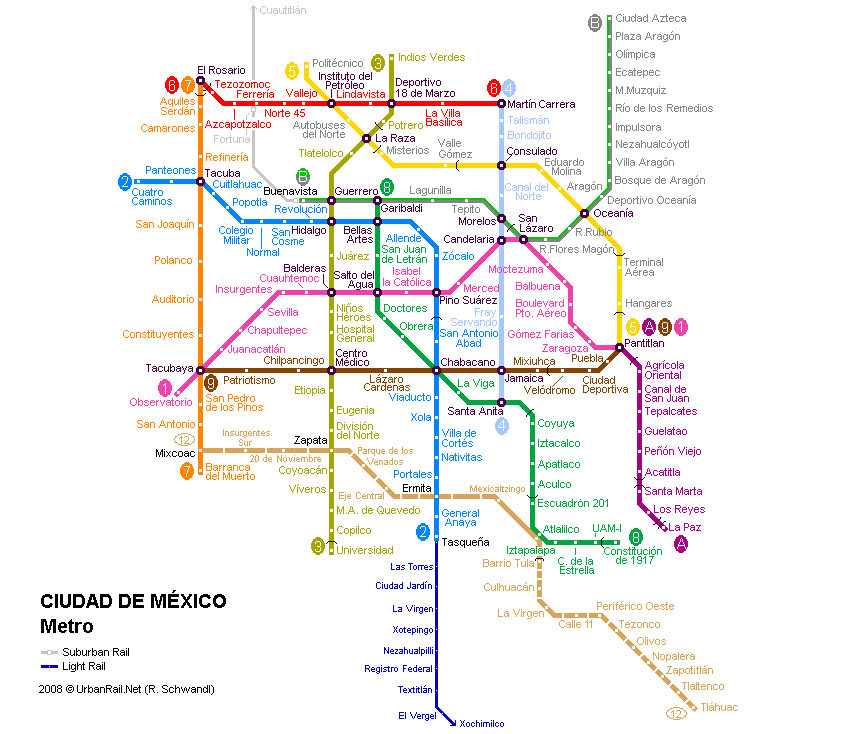
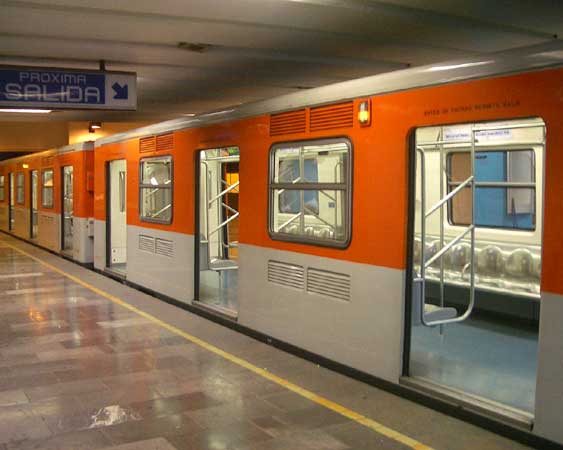
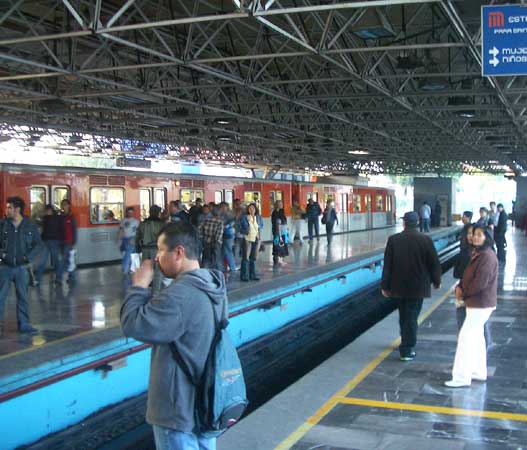
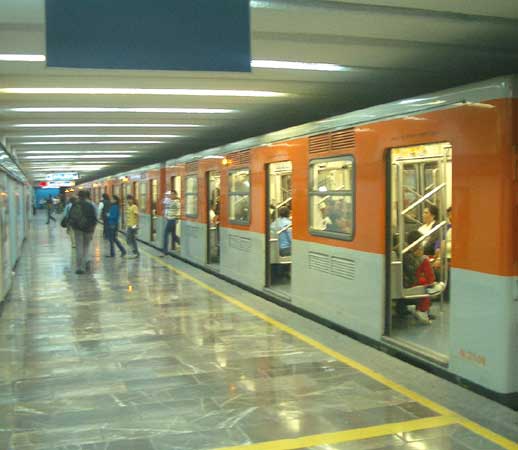
Within the city, thousands of peseros, small (30 seater) buses, provide the connections from the Metro to neighborhoods and to the few places not well served by Metro. Based on our personal observations, these buses could be better organized with marked stops and set routes. Still, they offer an extremely well used connectivity to the system.
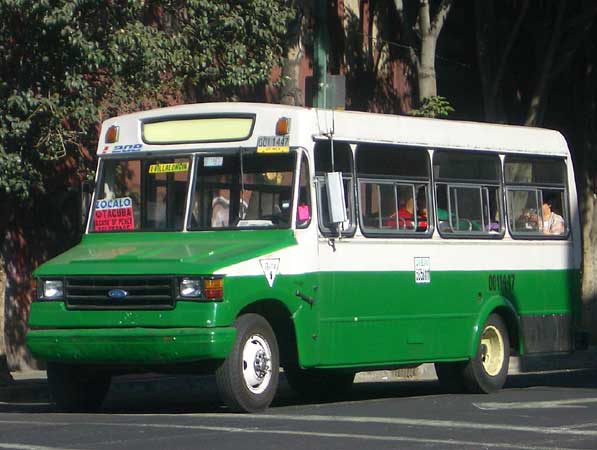
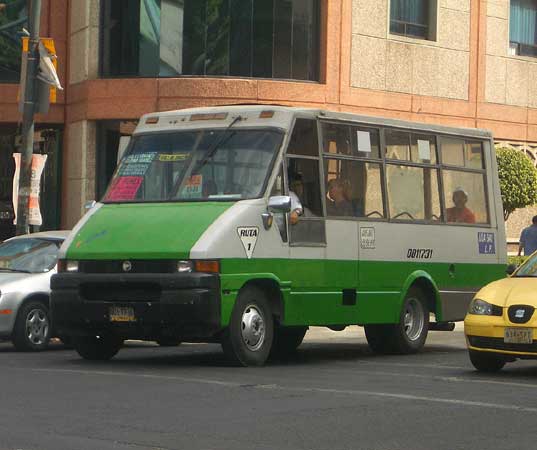
These small buses, along with larger ones also provide transport from the ends of each Metro line to outer suburban areas. We experienced this when we rode a pesero from suburban La Quebrada to the bus complex at Cuatro Caminos Metro, the western end of Line 1. We were taken aback by the constantly moving mass of buses coming and going. Stairs from the bus level took people into an underground concourse leading to the entrance to the Metro.
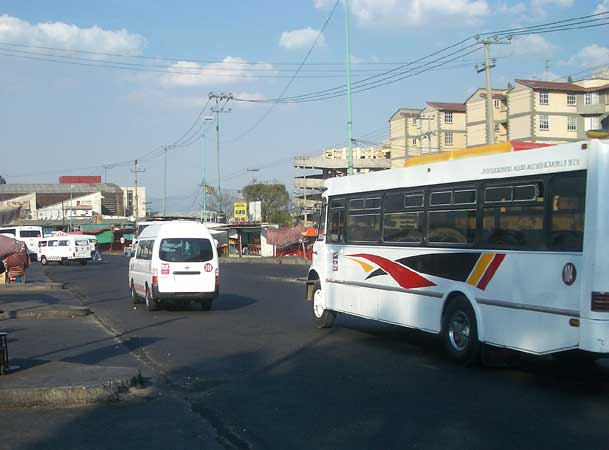
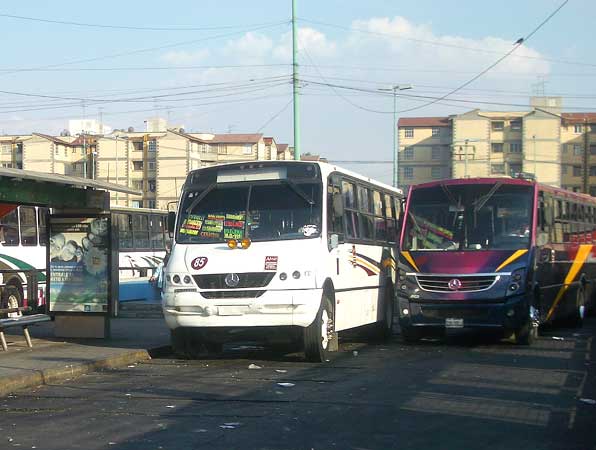
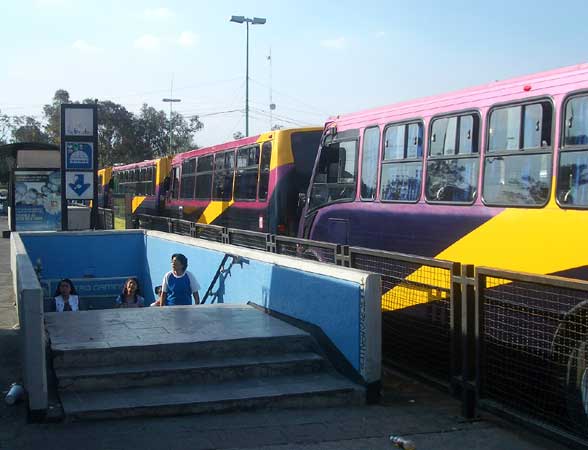
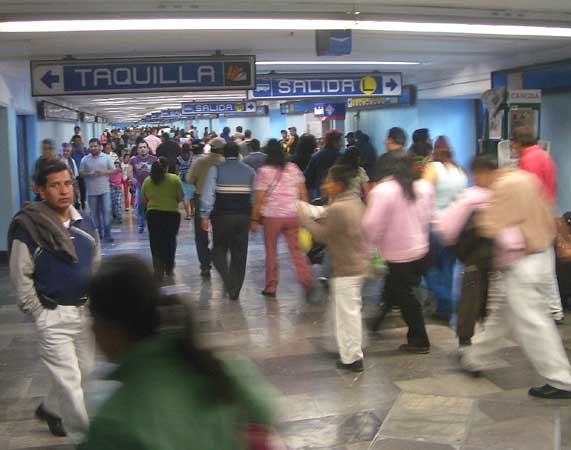
On a grander scale, the Pantitlan Station, the eastern end of Line 1, and the terminus of three other Metro lines, had dozens of bus stops from which arriving passengers entered overhead concourses leading to the entrances to the Metro lines. Again commuters could ride a bus to the Metro, and then travel on to their destination.
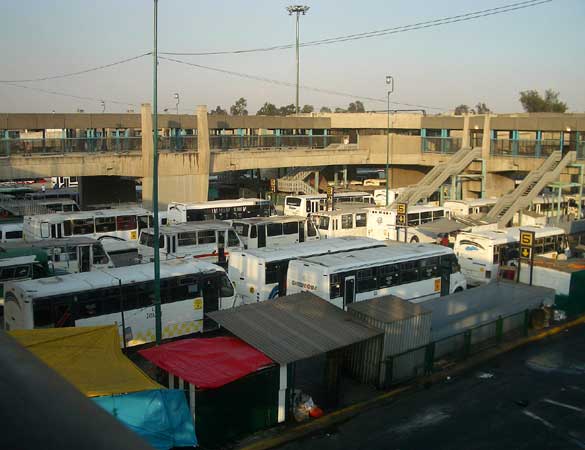
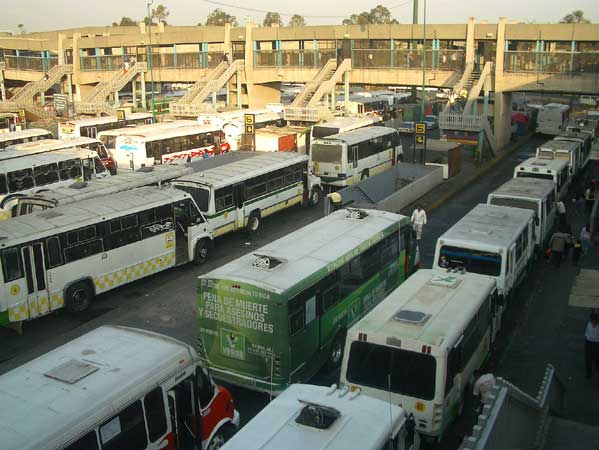
But as the density of the population increased, the Metro was 'maxing out'! City transit planners realized that they needed to provide more capacity; but how? They envisioned a series of bus rapid transit (BRT) lines to run on the surface on fixed routes with stations similar to those in the Metro. This additional service would provide the much needed increased capacity at less cost to build. The result was Metrobus, a system of large comfortable buses that run in dedicated lanes in the center of streets and avenues. The mayor has promised that the system will be expanded from the two lines running now to eight or ten more in the near future.
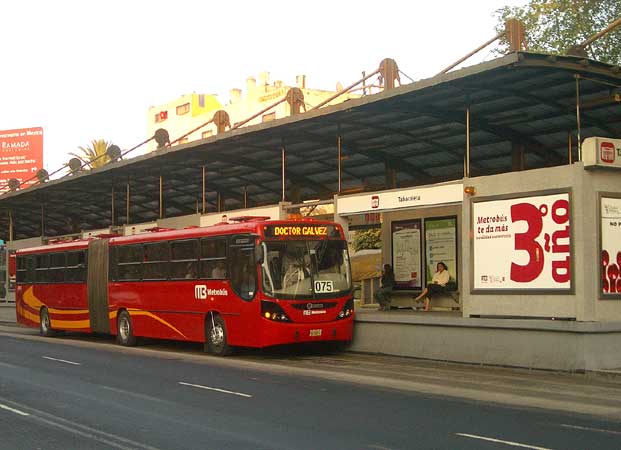
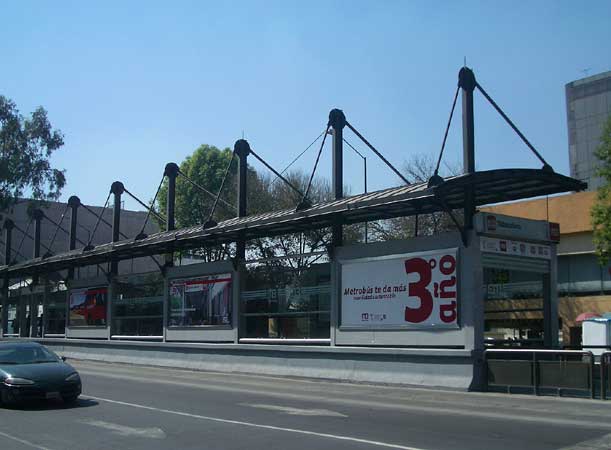
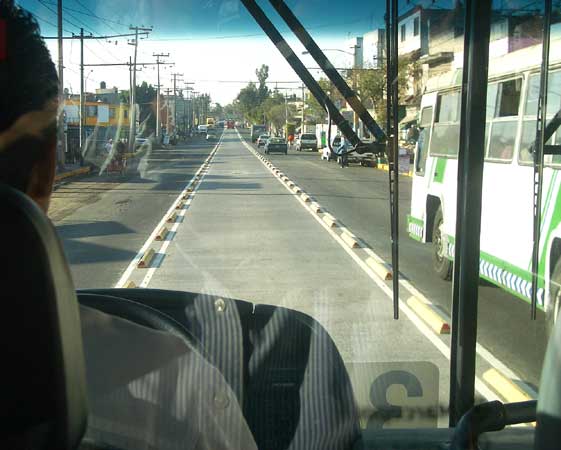
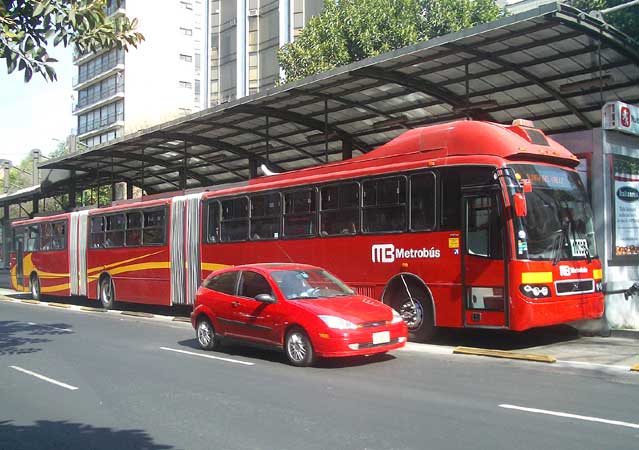
This approach was pioneered in Curitiba, Brazil, where low cost transit was needed decades ago. Since then, more and more cities are turning to BRT when the construction practicalities or the cost prevents the building of rail systems.
Looking ahead, electric suburbanos trains will offer another expansion of total system capacity. Using existing rail right of way, these trains run to the farther suburbs and exurbs and will be expanded to provide passenger rail service to other cities. The initial line is already operating from the newly renovated Buenavista railway station using modern electric equipment.
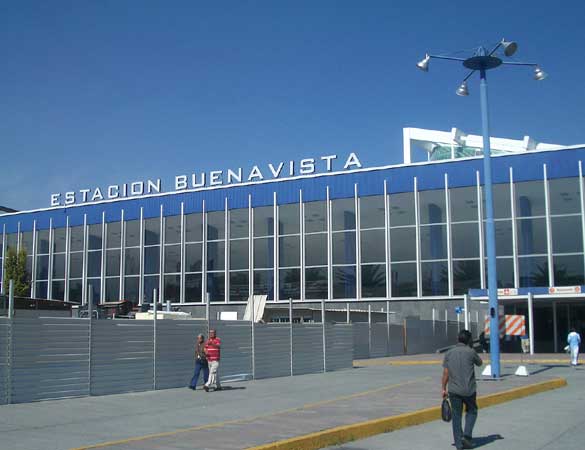
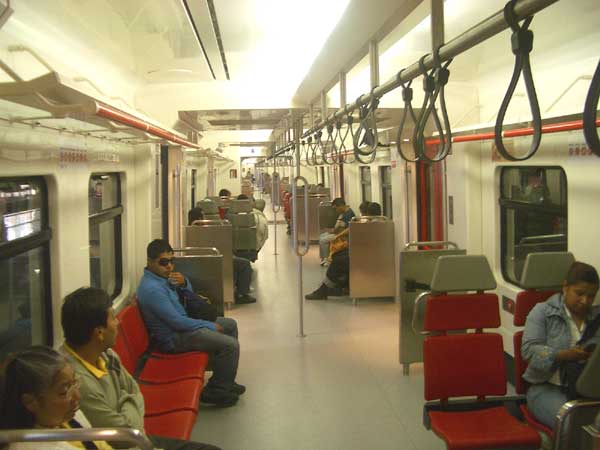
Looking back, there are still venerable trolebuses (electric buses) running on several routes but we wonder what their fate will be as the city continues to modernize the transit system.
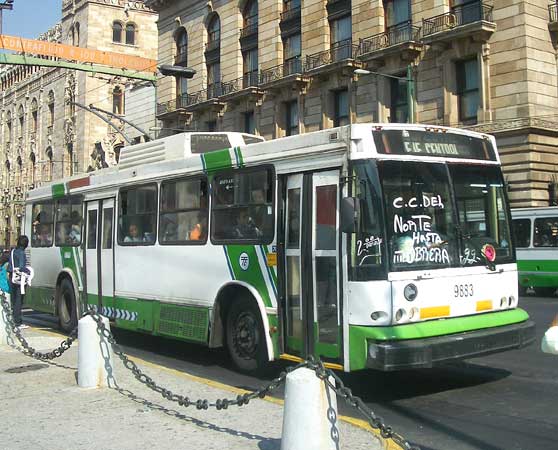
Meanwhile, the streets and avenues are clogged with cars, trucks, taxis and pesero buses, all inching ahead, honking, spewing air polluting, climate changing gases.Why, we wonder, when a comfortable alternative is, in some cases, so close, people still insist on exercising their right to drive!
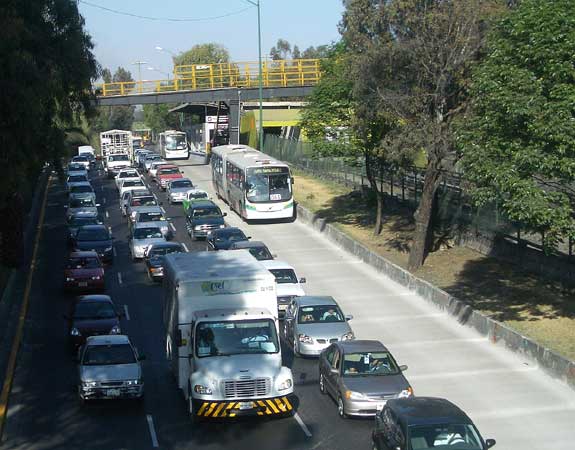
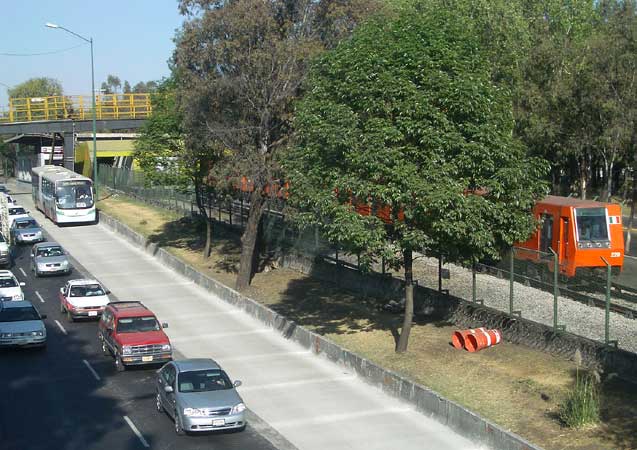
The driving experience must be one of the primary stress factors, making life for these obdurate drivers certainly less than pleasant while reducing the city's People Friendliness, considering that everyone is adversely impacted by the noise, dirty air, pedestrian risk, and resource waste.
We look forward to a return to Ciudad de Mexico in few years when the Metrobus system expansion has been completed, and more suburbanos trains are running. By then, we hope commuters will have seen the light and released the grip on their steering wheels to leave the driving to this first-rate transit system.
Click here to return to Our Moving on to Mexico - Winter 2008-2009 page
![]()